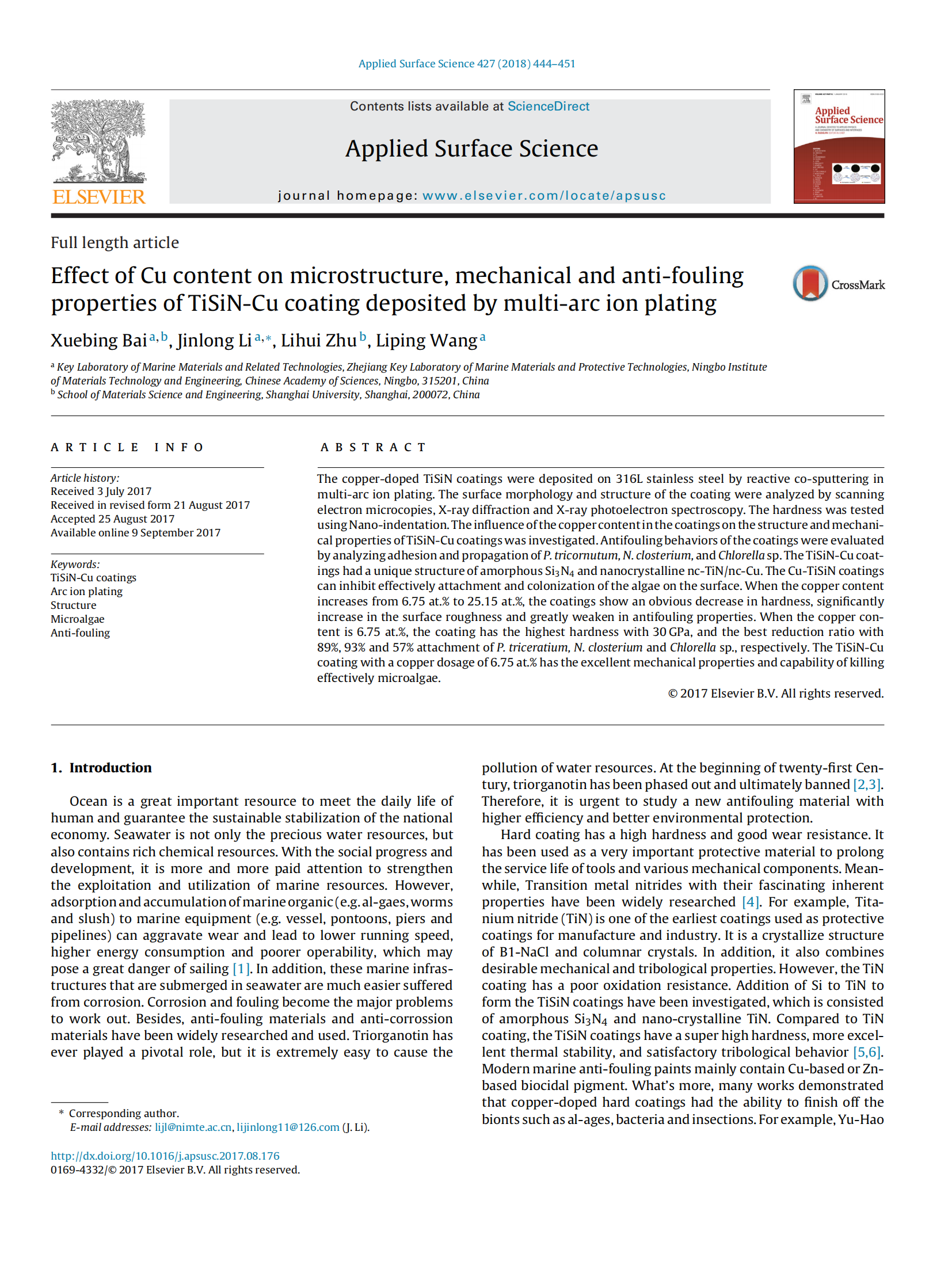The copper-doped TiSiN coatings were deposited on 316L stainless steel by reactive co-sputtering in multi-arc ion plating. The surface morphology and structure of the coating were analyzed by scanning electron microcopies, X-ray diffraction and X-ray photoelectron spectroscopy. The hardness was tested using Nano-indentation. The influence of the copper content in the coatings on the structure and mechanical properties of TiSiN-Cu coatings was investigated. Antifouling behaviors of the coatings were evaluated by analyzing adhesion and propagation of P. tricornutum, N. closterium, and Chlorella sp. The TiSiN-Cu coatings had a unique structure of amorphous Si3N4 and nanocrystalline nc-TiN/nc-Cu. The Cu-TiSiN coatings can inhibit effectively attachment and colonization of the algae on the surface. When the copper content increases from 6.75 at.% to 25.15 at.%, the coatings show an obvious decrease in hardness, significantly increase in the surface roughness and greatly weaken in antifouling properties. When the copper content is 6.75 at.%, the coating has the highest hardness with 30 GPa, and the best reduction ratio with 89%, 93% and 57% attachment of P. triceratium, N. closterium and Chlorella sp., respectively. The TiSiN-Cu coating with a copper dosage of 6.75 at.% has the excellent mechanical properties and capability of killing effectively microalgae.
